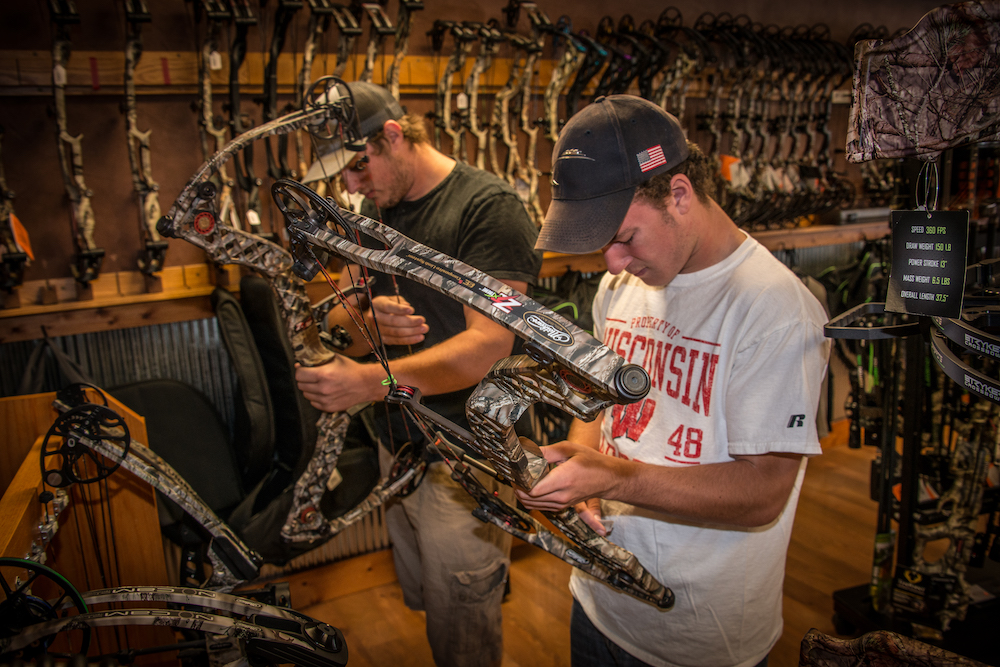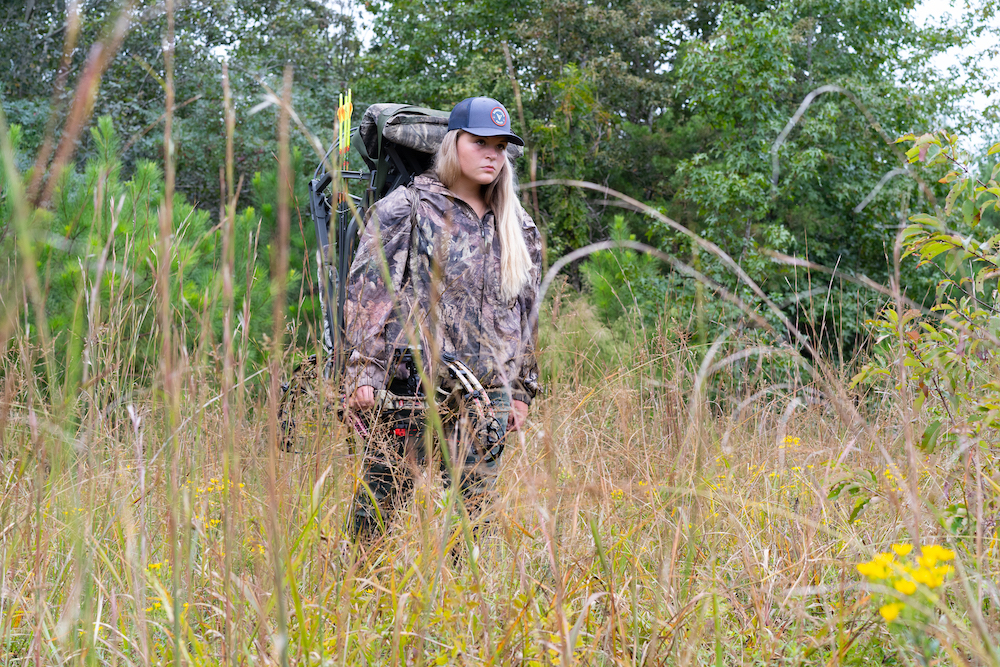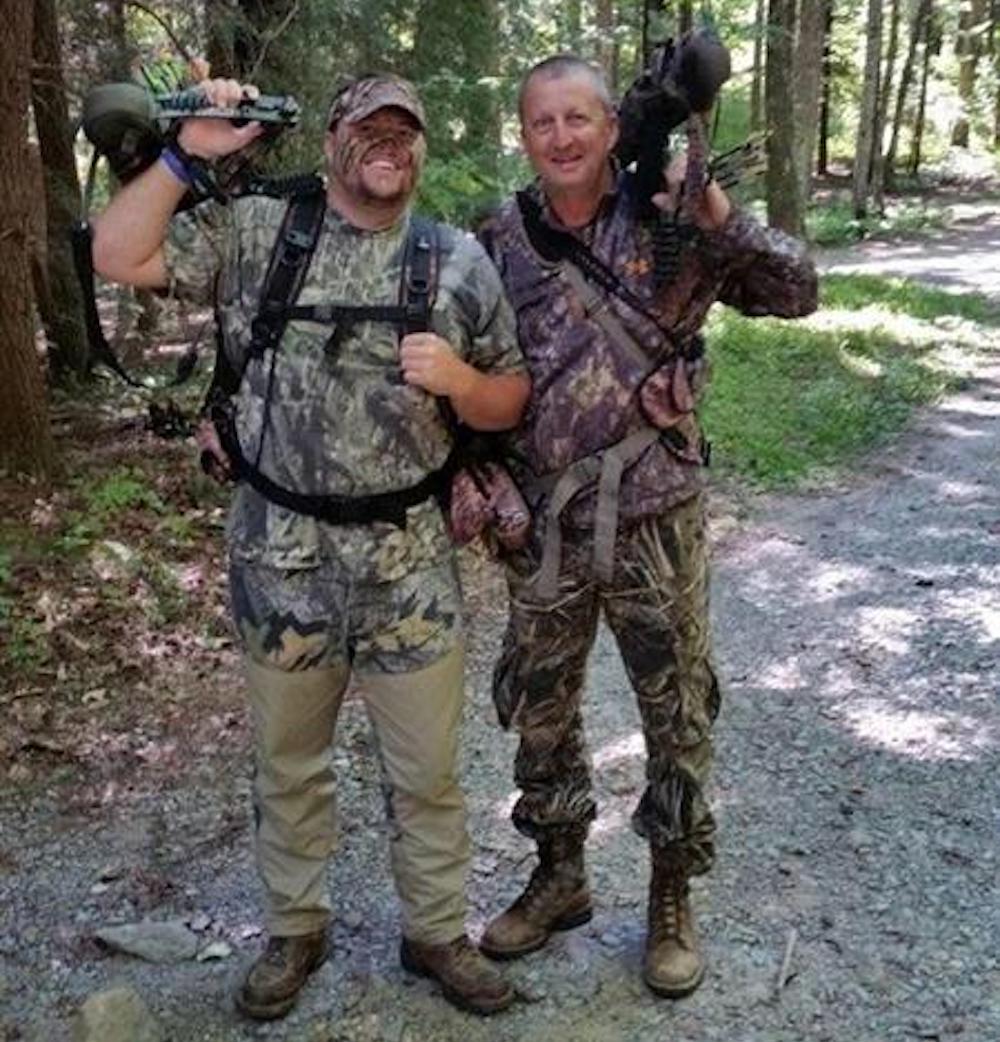BusinessMarketing
Help Customers Find Products for Every Stage of Life
Bowhunters’ needs change as they age. Adapt your sales strategy to fit their needs, and you’ll probably sell more products.
Photo Credit: ATA
Has your relationship with bowhunting changed since you started? Do you spend more or less time afield? Do you buy more or less gear? Do you hunt places with terrain that’s easier or harder to walk through?
No matter how old you are, you likely have a different approach to bowhunting than those who are younger or older than you. Why? Because a person’s physical abilities, time commitments and financial status change over time. All those things determine how someone bowhunts.
Most teens and 20-something bowhunters are in the best physical shape of their life and have more time to commit to bowhunting. But they’re usually strapped for cash as they progress through school and begin to navigate life on their own. People in their 30s, 40s and 50s usually get married, have kids and deal with a demanding work schedule. At this point in their life, they have money and are still physically able to bowhunt, but their time afield is often limited. The 60-plus crowd is either retired or nearing retirement, and their family is expanding as grandkids enter the equation. They usually have more free time and a financial base, but their scouting missions shorten, and deep-woods hunts become rarer as they fight aches and pains.
These life changes affect people’s mindset toward equipment and outdoor recreation. Charlie Giles, 59, and his son Travis Giles, 36, of Sandersville, Georgia, talked about these changes and how money and life events helped guide their spending habits and thoughts about bowhunting. Use these insights to adjust your sales strategy to make better product recommendations and sell more products.

Do you hold on to gear or do you like to try the latest products? Photo Credit: ATA
Travis arrowed his first deer when he was 7. While he was that age and through most of his teens, Charlie paid for all his gear. Travis was only allowed to get the necessities, and if he wanted something unique or special, he had to save his money and buy it himself. He shot competitively in his late teens and had sponsors pay for things. He also worked at a retail shop and received discounts on gear.
Typically, you’ll run into teens and people in their 20s with one of two spending habits. One, they limit what bowhunting gear they buy and are strategic about what they get because they don’t have extra money. Or two, they care so much about bowhunting that they tend to forget about other expenses to get what they want.
“Without a shadow of a doubt, I was the latter of the two,” Travis said. “I spent all of my money on hunting stuff. In my mid 20s I wanted the newest things. Now, I hold on to (items) for a few years. I got wiser with my spending habits.”
As he aged and matured, his responsibilities grew and hunting purchases took a back seat to gas, groceries, bills, family entertainment and home repairs.
The Takeaway: As young adults start to navigate life, they become more money conscious. Coach them through buying decisions so they can get the best bang for their buck. By looking out for their best interests, you’re also watching your own, as they’ll likely return when their wallet fills. That said, some folks always want the latest and greatest. Make the sale but don’t take advantage of your customers and allow them to go broke on hunting equipment. Try to work with young people by offering a consignment program so they can sell their old stuff in the store and get store credit. Be creative.

Younger bowhunters might be more inclined to push through discomfort. Photo Credit: ATA
By nature, young adults are more agile, coordinated and resilient. They also tend to have a laid-back, go-with-the-flow mentality. Translate those characteristics to the woods and you’ll see them dealing with issues despite discomfort, unlike their older counterparts who tend to despise rain, leaky boots, clothes that don’t fit or tiny metal seats with paper-thin cushions.
“Now I want my lock-ons to have a better seat than the stands I used in my 20s,” Travis said. “Comfort is king.”
Although middle-aged folks spend carefully, they’re more likely to invest in things that make hunting more pleasant and enjoyable. They also care more about safety features for the sake of their families.
Travis has worn a harness since he started hunting thanks to his dad’s insistence, but his relationship with safety equipment changed as he aged. Now he wears a harness because it’s irresponsible not to and because his family relies on him and expects him to return home.
“I used to forget it and I’d go ahead and hunt, but now I won’t hardly get into a tree without a safety harness,” Travis said.
The Takeaway: Sell the right product features to the right people. Younger bowhunters will likely tolerate more utilitarian items if it fits their budget. Additionally, harnesses might be a tough sell for younger audiences, so you need to approach the subject strategically. Providing the proper motivation, reason or justification for buying a product goes a long way.
Younger bowhunters tend to be more adventurous, try new products, hunt new places and personalize their equipment, whereas the older generation is less adventurous and faithful to their favorite products because they’re familiar. Some older folks tend to be stubborn and likely stuck in their ways, but they’ll typically buy products if it makes their life easier. Think binoculars, lighter treestands, easy-to-see pins, and bows with better let-off or a smoother draw.
“I’m 100% more willing to try new products (compared with my dad),” Travis said. “I’m not a bandwagon person, but if I see something that makes sense, I’m willing to try it. I shoot all kinds of broadheads. My dad still shoots a 100-grain Muzzy — and has for a long time. I pick on him all the time and ask if he wants to try another broadhead. He’ll say, ‘Why would I want to try something different? I’ve been shooting these for x-number of years, and they work flawlessly. Why do you want to fix something that’s not broke?’”
The Takeaway: Channel your breath, time and energy into productive conversations. Also, instead of trying to verbally convince a senior to try a product, host a product demo day for them to test-drive items. Allow them to see and feel how a product works, and they might do more than take your word for it — they might take the product home with them.

WE ARE HERE TO HELP THE INDUSTRY, TO HELP INDIVIDUAL BUSINESSES GET THE MOST OUT OF THE INDUSTRY, AND TO HELP YOU.

Go hunting as a family and teach your children your tips and tricks. Photo Credit: Charlie and Travis Giles
Both Charlie and Travis wanted to involve their families in bowhunting so they could spend more time together. Charlie included Travis when he was young, and Travis is trying to pass the tradition on to his two daughters, ages 16 and 12, and eventually his son, who’s 2.
Travis said the best part about hunting is having his wife, kids and other family members go.
“When you’re passionate about it and you have a family, deep down inside, you want them to love it as much as you,” Travis said. “And when you see them enjoy it, you get to see it come full circle.”
Charlie agreed. “When you have children, hunting gets a lot more fun,” he said. “Hunting is a solo thing, but you go with people. It’s more fun to have someone with you.”
Travis outfitted his daughters with used equipment because he wasn’t sure whether they’d like it. He said the wide range of adjustable features on bows nowadays is great because someone can use the bows he got, even if it’s not his daughters. He also bought his wife a new setup.
The Takeaway: If you’re working with families and new hunters, recognize they probably don’t need the most expensive options to start. In fact, because a single household is buying equipment for multiple people, they probably want products with value and durability over those that offer cutting-edge technology. Regardless of what customers choose, carefully set up each individual so they can shoot accurately and comfortably. If someone’s gear isn’t set up correctly and they can’t hit the bull’s-eye, they’ll probably drop out a lot sooner. But, if you hook them, you might have their business for life.
Also, suggest products that help families stay connected while bowhunting, including buddy stands and ground blinds — and walkie-talkies in case the kids don’t have cellphones or you’re hunting a location without service.
A big, unavoidable difference between young and old hunters is their physical abilities. Charlie and Travis used to hang lock-ons manually, where they’d dangle 18 feet off the ground, holding the tree with one arm and securing the stand to the tree with the other. Now, they both use brackets and mounting systems.
Travis recalls toting heavy steel stands everywhere he went (and not caring that they were steel) 10 years ago, but now he looks for aluminum or lightweight stands because they’re easier to carry, especially when his arms are full of extra gear for his kids.
Charlie said the technology for bows, accessories and products is great, especially for older folks, compared with what was on the market when he was a kid. Thankfully he’s still able to bowhunt, despite shoulder problems.
“My dad used to shoot a 70-pound bow with 60% let-off,” Travis said. “Now he shoots a 50-pound bow with a 90% let-off. That’s huge for people. People start to get older, and they tend to wean off the bow and arrow. It seems the older generation doesn’t take into consideration they can go buy a 50-pound bow and go kill deer just like they did with an 80-pound bow when they were 20. There’s no reason to get out of it just yet — there are still plenty of options on the market, as long as they’re willing to try them.”
Charlie said hunting gets harder the older you get. He foresees himself using ladder stands or ground blinds in the future for ease and convenience.
The Takeaway: The products people need change as they age. Recommend products that make hunting easier and accessible for older folks. Remind them they have options, like crossbows and ground blinds. You can mention how both products are great for small, fidgety grandkids, too. It’s best to stock these products to help pique interest. Showing someone a product is more enticing than telling them you can get it.
Get to know your customer and what’s happening in their life so you can recommend better products. Remember, getting to know customers means asking questions, letting them talk and listening to their story and needs. Be sure to tweak your sales pitch to fit the customer you’re working with.
A lot of data supports the Giles family’s personal experiences. ATA’s article “Survey Results: Bow Preferences and Buying Habits for Three Generations” highlights similar information.
